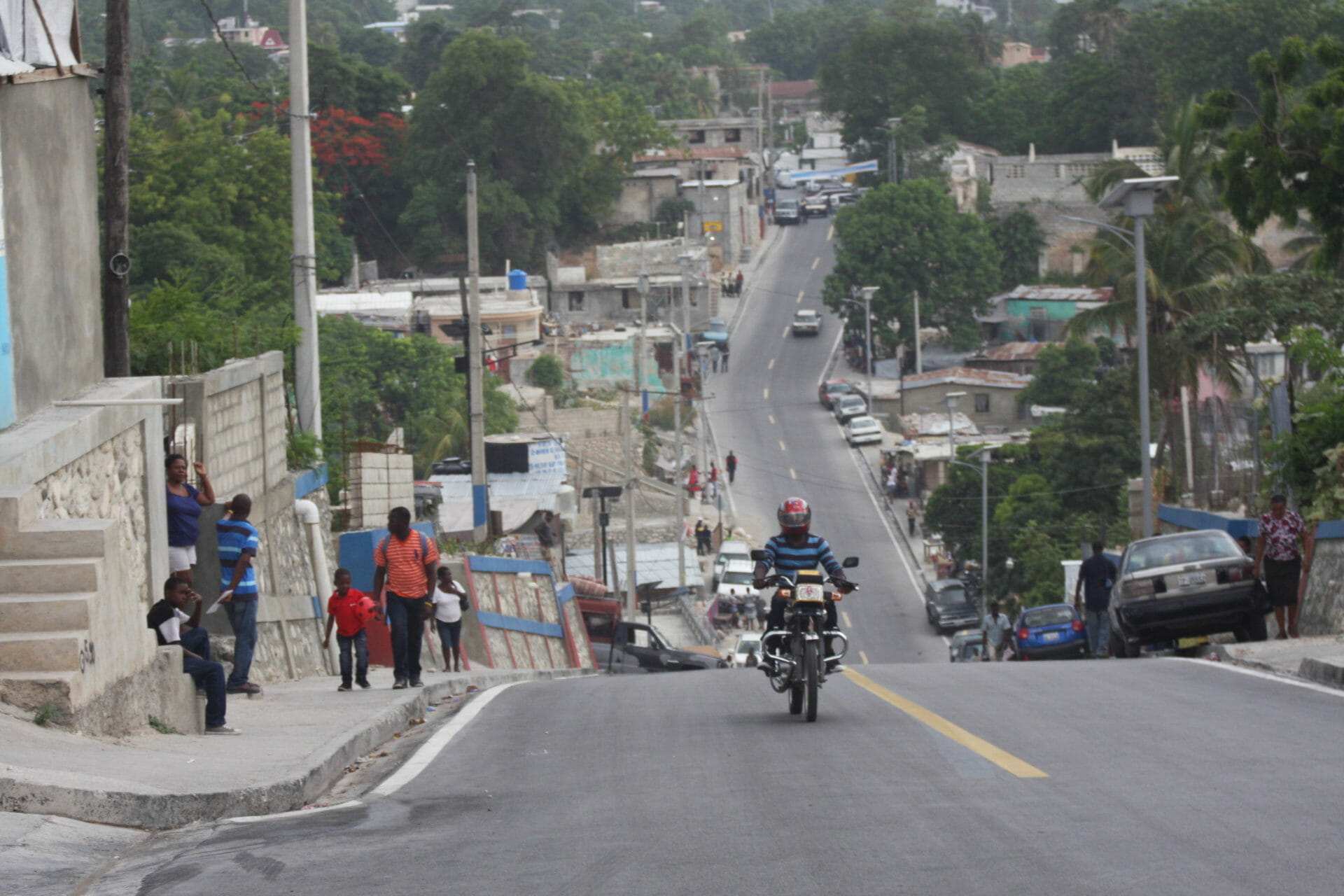As part of our holistic approach to delivering humanitarian assistance, Global Communities aims to identify ways to mitigate against future risks while delivering urgent, lifesaving assistance, and supporting households’ and communities’ ability to recover from natural and man-made disasters.
Our disaster risk reduction interventions mitigate the impacts of shocks on vulnerable populations; prevent the erosion of household assets and livelihoods; and accelerate recovery from humanitarian crises.

Haiti
On January 12, 2010, a devastating earthquake struck Haiti, resulting in the loss of more than 230,000 lives and massive destruction. Global Communities responded immediately. With funding from the U.S. Agency for International Development (USAID), Global Communities launched a major recovery program that focused on large-scale rubble removal and recycling, cash-for-work, construction of transitional shelters and a new type of disaster response using a neighborhood approach.
For example, Global Communities implemented the groundbreaking $8.6 million urban reconstruction program in the neighborhood of Ravine Pintade in Port-au-Prince. In just under 18 months, the integrated approach provided rubble removal and shelter building services, while working with the community on green spaces, plots for schools and proper access roads to cover the basics of sustainable urban improvement.
The program was successful in creating a livable neighborhood with adequate shelter, basic services and other physical improvements. Essential to that success were community mobilization and trust-building efforts, since the support and cooperation of residents were required in order to increase the amount of useful public space. Community mobilization was fundamental in the enumeration process, where local participation fostered consensus on the status of occupancy, tenure and family condition and needs, and in coming up with workable plans for temporary relocation of families while new shelters were built.
Our Approach
In urban areas, our disaster risk reduction work includes utilizing a neighborhood approach to reduce the impact of disasters by improving the conditions of informal settlements, transforming them into safe, healthy and prosperous neighborhoods.
In other urban areas and camp settings, we provide infrastructure upgrades – such as critical improvements in roads and drainage systems – to mitigate the risks of flooding and health concerns caused by stagnant water.
In rural areas, our disaster risk reduction work is tailored to address the unique risks faced by rural communities. In these areas, our activities may include efforts to mitigate the risks of, and respond to, crop fires that would otherwise create devastating agricultural losses for vulnerable farmers.
Our work in this area reaches
Resources
Research & Publications
Humanitarian Assistance, Resilience, and Rebuilding: The Long-term Impact of the Neighborhood Approach on Post Earthquake Haiti
Summary of FindingsA Post-Project Sustainability Study of The KATYE Project The January 12, 2010 earthquake in Haiti was the largest natural disaster in the country’s history. Residents were confronted with a tragedy of monumental scale and the daunting task of building back. Among the hundreds of projects implemented in response to the disaster was the…
NEWS
Latest stories from the blog

Protection in Northern Syria
The Path Forward is a CSIS Humanitarian Agenda series of reflections from humanitarian organizations on the challenges in food security, disrupted health systems, humanitarian access, civilian …
Read More
USAID HEWS Program to Provide Post-Hurricane Shelter and WASH Support in Honduras
To respond to the substantial emergency needs brought on by recent hurricanes in Honduras, Global Communities has launched Honduras Emergency WASH and Shelter (HEWS), a …
Read More
Biloberizka and Pyadytska CCs Utilize Backhoes to Respond to Natural Disaster
USAID DOBRE, which is implemented by Global Communities, has provided excavators to several CCs in Ukraine as part of its service delivery improvement projects, which …
Read More
Building back stronger in Haiti, neighborhood by neighborhood
In January 2010, Haiti was changed forever by a devastating earthquake. Within moments, entire neighborhoods crumbled, upending families and communities in the blink of an …
Read More

